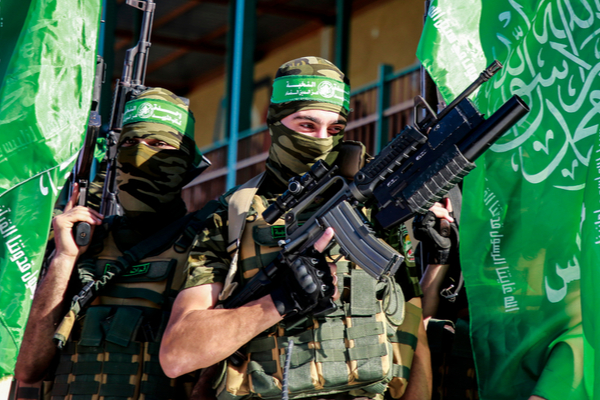Deadline.com interview also called Gilad Shalit an “Israeli occupation soldier,” characterized terrorists imprisoned for brutal murders as “political prisoners.”
By Rachel O’Donoghue, HonestReporting
Entertainment website Deadline.com recently published an interview with British-Palestinian filmmaker Farah Nabulsi, who discussed her forthcoming new movie ‘The Teacher,’ which tells the story of a Palestinian schoolteacher who “struggles to reconcile his life-threatening commitment to political resistance” with several relationships he has formed.
The original version of the interview, which was written by Deadline’s International Features Editor Diana Lodderhose and published on September 8, opened with the following paragraph:
“When British-Palestinian filmmaker Farah Nabulsi was watching the UK media coverage of the Gilad Shalit prisoner exchange in 2011, it had a profound impact on her. At the time, Shalit was an Israeli occupation soldier who had been abducted in 2006 by Palestinian freedom fighters and the first Israeli soldier to be captured by Palestinians since 1994. Shalit was eventually released five years later in exchange for more than 1,000 Palestinian political prisoners, including hundreds of which were women and children.”
This is undoubtedly among the most profoundly disturbing paragraphs about Israel ever published in a mainstream media outlet.
First, to characterize Hamas, the Islamist terrorist organization that rules over the Gaza Strip with an iron fist, as “freedom fighters” defies belief. The group, which is defined as a terrorist group by almost the entirety of the Western world, is behind some of the worst atrocities in Israeli history, including suicide bombings and shooting attacks that targeted innocent civilians.
We can only speculate as to which part of detonating an explosive-packed belt inside a restaurant filled with families, as was the case in the Sbarro pizzeria bombing, that Deadline editor Ms. Lodderhose believes constitutes freedom fighting.
Second, the description of Gilad Shalit as an “Israeli occupation soldier” is an example of the worst type of editorializing imaginable. Shalit, a corporal in the Israeli Defense Forces, was kidnapped by Hamas terrorists who had tunneled into Israel from Gaza and launched an attack on an IDF outpost.
Third, Lodderhose’s claim that “more than 1,000 Palestinian political prisoners” were released in exchange for Shalit is pure fiction. Among those set free in the controversial exchange was Ahlam Tamimi, the unrepentant mastermind of the aforementioned Sbarro attack who smirked when she was told how many children had died in the bombing. So was current Hamas chief Yahya Sinwar, who was originally sentenced to four life terms in 1989 for murder and kidnapping.
Sadly, the errors and editorial misjudgments are not confined to the first paragraph.
Lodderhose later refers to the “safety issues” that plagued the cast and crew, such as when the Israeli military “dropped bombs on the Palestinian city of Nablus… just a few kilometers from where the film had been shooting just a few hours prior.”
The hallmark of good journalism is providing readers with the necessary context to understand an event. When it comes to Nablus, readers deserve to know that Israel did not drop bombs on the city — the IDF carried out raids on properties associated with the Lions’ Den terrorist group to arrest senior operatives and destroy bomb-making facilities.
Lodderhose might also have given readers a bit of context about the very woman she was interviewing — Farah Nabulsi, whose film was reportedly inspired by the “cruel and absurd things” she has witnessed, including home demolitions and settler violence.
A search of Nabulsi’s social media profile on X, formerly known as Twitter, reveals that she believes that neo-Nazism is the same as Zionism and that she blamed Zionism for the 1929 Hebron massacre, in which dozens of Jews were murdered by marauding Arab gangs armed with clubs, knives and axes.
HonestReporting has complained to editors at Deadline about the piece, which has since been updated to remove the reference to Palestinian “freedom fighters” kidnapping Shalit and to him being an Israel “occupation” soldier. However, such edits do not nearly go far enough.
The bottom line is that this piece goes beyond poor journalism — it is propaganda that seeks to legitimize Palestinian terrorism.
It is a defense of the indefensible. Nothing more, nothing less.
